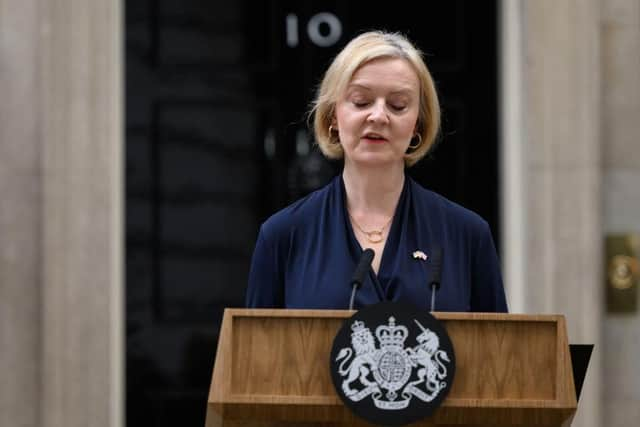What's A Unity Candidate? How the Conservative Party could appoint a new UK Prime Minister without a leadership contest
Now that Liz Truss has resigned from the top job, the hunt is on to find the third UK Prime Minister – and Conservative Leader – in less than two months.
Early favourites to be the next inhabitant of 10 Downing Street include Rishi Sunak, Penny Mordaunt and Ben Wallace – with even a dramatic comeback for Boris Johnson being speculated upon.
Advertisement
Hide AdAdvertisement
Hide AdOne thing’s for sure though – it won’t take as long as last time, with Liz Truss and 1922 Committee Chair Sir Graham Brady both saying a new leader will be in place by October, October 28.
This gives the Conservative Party just over a week to overcome internal squabbles and elect the person likely to lead them into the next General Election (although many said the same about the last contest).
Here’s how they might try to avoid a leadership race that could led to yet more party divisions.
How do the Conservatives elect a leader?
The current system means candidates need the backing of 20 named Conservative MPs to enter the race, and must gain votes from at least 30 MPs in order to pass the first ballot.


A series of ballots of Conservative MPs are held, with the lowest placed candidate dropping out after each vote.
When the race is down to two people the membership of the party are then asked to pick the new leader via another ballot.
This is how Liz Truss became Prime Minister, beating Rishi Sunak in the final vote.
Will this system be used again?
It seems unlikely that this will be the system used to appoint the new leader, due to self-imposed time restraints.
Advertisement
Hide AdAdvertisement
Hide AdThe 1922 Committee, led by Sir Graham Brady, are able to change the rules of the contest with the support of MPs – although it has been indicated that should there be several candidates the party membership will have a role in deciding the victor.
Does there have to be a members vote?
If there is only one person left in the race then that person will become Prime Minister by default without any member’s vote.
In 2016, the race was narrowed down to Andrea Leadsom and Theresa May, before the former withdrew to allow the latter to become Prime Minister without a ballot of the members.
What is a unity candidate?
There may not even need to be a series of ballots of MPs if the Conservative Party can find a candidate who is acceptable to the vast majority of the party – being put forward as the only candidate so becoming Prime Minister by default. This is called a unity candidate.
While that may seem unlikely given the divisions in the Conservative Party, it could be seen as the ‘least worst’ option, given the recent politican turbulence.
Who are likely unity candidates?
Names floated as potential unity candidates in recent days have included Michael Gove, Rishi Sunak, Jeremy Hunt, Ben Wallace and Penny Mordaunt.
Of those, both Jeremy Hunt and Michael Gove have previously distanced themselves from the top job, while Rishi Sunak is seen by some as still being too divisive.
As with many things in politics, only time will tell.
Comments
Want to join the conversation? Please or to comment on this article.